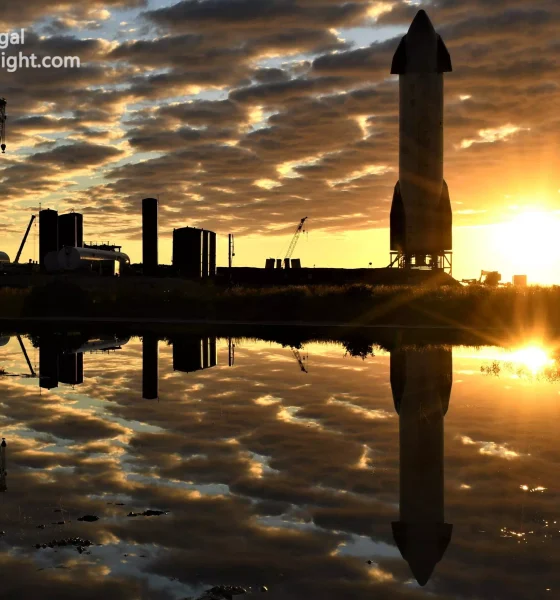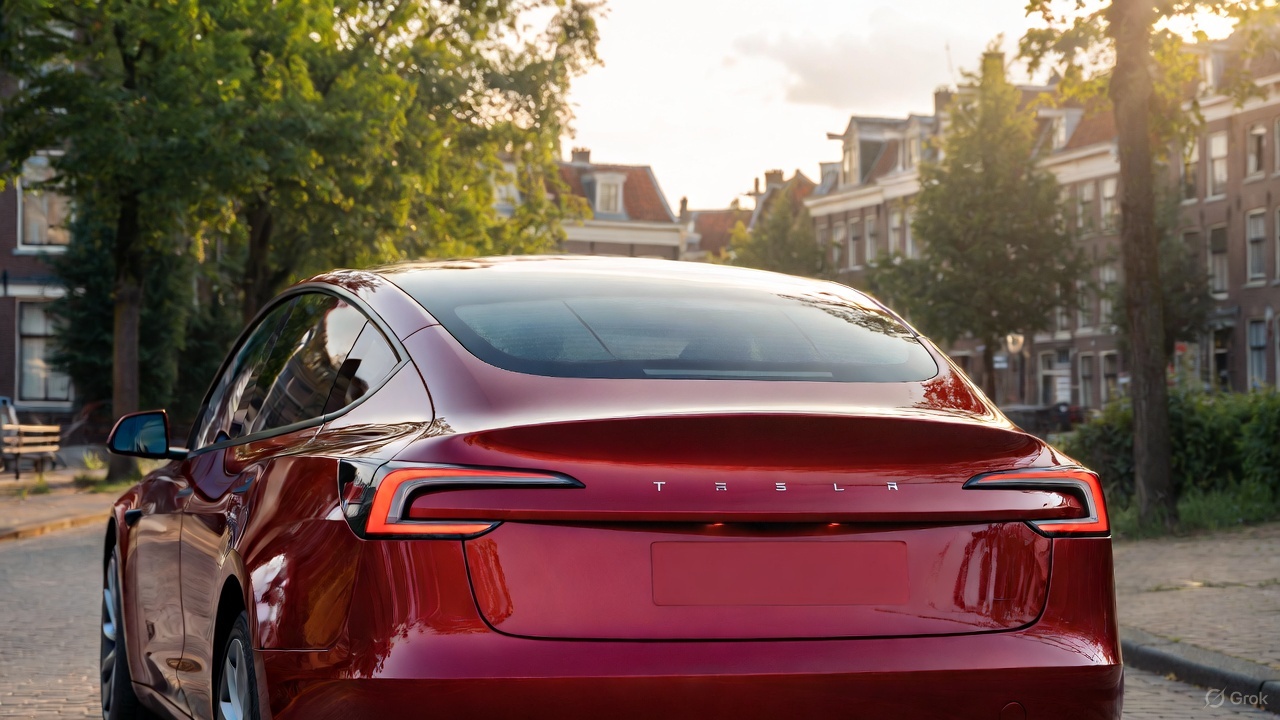

News
SpaceX’s next Starship launch still waiting on a successful Raptor test
Several days after the last test attempt, SpaceX’s next Starship launch remains delayed pending a successful static fire of the prototype’s three Raptor engines.
Delivered from SpaceX’s Boca Chica, Texas rocket factory to nearby launch and test facilities on December 22nd, less than two weeks after Starship serial number 8’s (SN8) high-altitude launch debut, successor Starship SN9 completed its first crucial test on December 29th. Known as a cryogenic proof test, SN9 was loaded either partially or fully with a large volume of liquid nitrogen to simulate the thermal stresses caused by liquid methane and oxygen propellant and ensure that pad systems and the rocket’s plethora of valves, pipes, and avionics were working as expected.
Cryoproof more or less completed on schedule, SN9’s follow-up static fire test continued in a similarly smooth fashion, with the first attempt once again falling within a planned three-day window – albeit on January 6th, the last of those three days. Near the end of the 8 am to 5 pm window, Starship SN9 ignited all three preinstalled Raptor engines but NASASpaceflight.com ultimately revealed that the test had been shorter than SpaceX expected.
Relative to all previous Starship testing, even ignoring the facts that a handling error damaged SN9 just one month ago and that the rocket is only the second prototype to have a full nose section installed and plumbed, SN9’s test campaign has been smooth. Despite the unique hurdles SN9 faced, the Starship completed a cryoproof and a static fire on its first respective day of attempts. Minor slips along the way – including recent static fire re-do delays – simply serve as a reminder that the Starship program and its prototypes have yet to reach operational maturity.
Why SN9’s first static fire ended prematurely is unclear and could have been caused by just about anything. The fact that all three Raptors shut down early points a finger to something other than the engines themselves and the clean abort SN9 seemingly commanded points to a relatively minor issue as far as rocket prototypes go.
Two days later, SpaceX tried again but had even less luck, seemingly never making it more than 10-20 minutes into a usual 40-60 minute static fire test flow in several consecutive attempts. Due to an apparent agreement with Cameron County to avoid road closures on the weekend, Starship SN9’s next shot at a second static fire was delayed three days to Monday, January 11th. Possibly due to high winds and generally unfavorable weather, Monday’s static fire attempt was called off before the window opened.
Later that day, SpaceX delivered notices confirming that the next SN9 static fire attempt was now scheduled no earlier than (NET) 8 am to 5 pm CST (UTC-6) on Tuesday, January 12th. Whether SN9 actually pulls off a full-duration static fire, weather forecasts remain unfavorable for a low-velocity, high-altitude launch. Cancelled FAA Temporary Flight Restrictions (TFRs) more or less confirmed SpaceX’s agreement with those forecasts, leaving Starship SN9’s 12.5 km (~7.8 mi) launch debut scheduled no earlier than Friday, January 15th or Saturday, January 16th.

Elon Musk
Tesla CEO Elon Musk sends rivals dire warning about Full Self-Driving

Tesla CEO Elon Musk revealed today on the social media platform X that legacy automakers, such as Ford, General Motors, and Stellantis, do not want to license the company’s Full Self-Driving suite, at least not without a long list of their own terms.
“I’ve tried to warn them and even offered to license Tesla FSD, but they don’t want it! Crazy,” Musk said on X. “When legacy auto does occasionally reach out, they tepidly discuss implementing FSD for a tiny program in 5 years with unworkable requirements for Tesla, so pointless.”
I’ve tried to warn them and even offered to license Tesla FSD, but they don’t want it! Crazy …
When legacy auto does occasionally reach out, they tepidly discuss implementing FSD for a tiny program in 5 years with unworkable requirements for Tesla, so pointless. 🤷♂️
🦕 🦕
— Elon Musk (@elonmusk) November 24, 2025
Musk made the remark in response to a note we wrote about earlier today from Melius Research, in which analyst Rob Wertheimer said, “Our point is not that Tesla is at risk, it’s that everybody else is,” in terms of autonomy and self-driving development.
Wertheimer believes there are hundreds of billions of dollars in value headed toward Tesla’s way because of its prowess with FSD.
A few years ago, Musk first remarked that Tesla was in early talks with one legacy automaker regarding licensing Full Self-Driving for its vehicles. Tesla never confirmed which company it was, but given Musk’s ongoing talks with Ford CEO Jim Farley at the time, it seemed the Detroit-based automaker was the likely suspect.
Tesla’s Elon Musk reiterates FSD licensing offer for other automakers
Ford has been perhaps the most aggressive legacy automaker in terms of its EV efforts, but it recently scaled back its electric offensive due to profitability issues and weak demand. It simply was not making enough vehicles, nor selling the volume needed to turn a profit.
Musk truly believes that many of the companies that turn their backs on FSD now will suffer in the future, especially considering the increased chance it could be a parallel to what has happened with EV efforts for many of these companies.
Unfortunately, they got started too late and are now playing catch-up with Tesla, XPeng, BYD, and the other dominating forces in EVs across the globe.
News
Tesla backtracks on strange Nav feature after numerous complaints

Tesla is backtracking on a strange adjustment it made to its in-car Navigation feature after numerous complaints from owners convinced the company to make a change.
Tesla’s in-car Navigation is catered to its vehicles, as it routes Supercharging stops and preps your vehicle for charging with preconditioning. It is also very intuitive, and features other things like weather radar and a detailed map outlining points of interest.
However, a recent change to the Navigation by Tesla did not go unnoticed, and owners were really upset about it.
For trips that required multiple Supercharger stops, Tesla decided to implement a naming change, which did not show the city or state of each charging stop. Instead, it just showed the business where the Supercharger was located, giving many owners an unwelcome surprise.
However, Tesla’s Director of Supercharging, Max de Zegher, admitted the update was a “big mistake on our end,” and made a change that rolled out within 24 hours:
The naming change should have happened at once, instead of in 2 sequential steps. That was a big miss on our end. We do listen to the community and we do course-correct fast. The accelerated fix rolled out last night. The Tesla App is updated and most in-car touchscreens should…
— Max (@MdeZegher) November 20, 2025
The lack of a name for the city where a Supercharging stop would be made caused some confusion for owners in the short term. Some drivers argued that it was more difficult to make stops at some familiar locations that were special to them. Others were not too keen on not knowing where they were going to be along their trip.
Tesla was quick to scramble to resolve this issue, and it did a great job of rolling it out in an expedited manner, as de Zegher said that most in-car touch screens would notice the fix within one day of the change being rolled out.
Additionally, there will be even more improvements in December, as Tesla plans to show the common name/amenity below the site name as well, which will give people a better idea of what to expect when they arrive at a Supercharger.
News
Dutch regulator RDW confirms Tesla FSD February 2026 target
The regulator emphasized that safety, not public pressure, will decide whether FSD receives authorization for use in Europe.

The Dutch vehicle authority RDW responded to Tesla’s recent updates about its efforts to bring Full Self-Driving (Supervised) in Europe, confirming that February 2026 remains the target month for Tesla to demonstrate regulatory compliance.
While acknowledging the tentative schedule with Tesla, the regulator emphasized that safety, not public pressure, will decide whether FSD receives authorization for use in Europe.
RDW confirms 2026 target, warns Feb 2026 timeline is not guaranteed
In its response, which was posted on its official website, the RDW clarified that it does not disclose details about ongoing manufacturer applications due to competitive sensitivity. However, the agency confirmed that both parties have agreed on a February 2026 window during which Tesla is expected to show that FSD (Supervised) can meet required safety and compliance standards. Whether Tesla can satisfy those conditions within the timeline “remains to be seen,” RDW added.
RDW also directly addressed Tesla’s social media request encouraging drivers to contact the regulator to express support. While thanking those who already reached out, RDW asked the public to stop contacting them, noting these messages burden customer-service resources and have no influence on the approval process.
“In the message on X, Tesla calls on Tesla drivers to thank the RDW and to express their enthusiasm about this planning to us by contacting us. We thank everyone who has already done so, and would like to ask everyone not to contact us about this. It takes up unnecessary time for our customer service. Moreover, this will have no influence on whether or not the planning is met,” the RDW wrote.
The RDW shares insights on EU approval requirements
The RDW further outlined how new technology enters the European market when no existing legislation directly covers it. Under EU Regulation 2018/858, a manufacturer may seek an exemption for unregulated features such as advanced driver assistance systems. The process requires a Member State, in this case the Netherlands, to submit a formal request to the European Commission on the manufacturer’s behalf.
Approval then moves to a committee vote. A majority in favor would grant EU-wide authorization, allowing the technology across all Member States. If the vote fails, the exemption is valid only within the Netherlands, and individual countries must decide whether to accept it independently.
Before any exemption request can be filed, Tesla must complete a comprehensive type-approval process with the RDW, including controlled on-road testing. Provided that FSD Supervised passes these regulatory evaluations, the exemption could be submitted for broader EU consideration.








